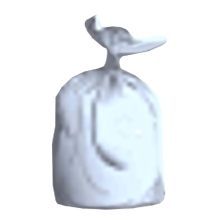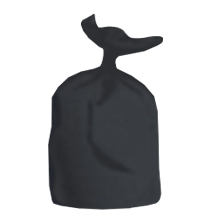Roads are for everyone to use safely. On this page you can find information on how to keep yourself and other road users safe, information on general Island speed limits (including vehicle type speed limitations) and information on traffic signs & road markings.
Speed Limit Information
- The Island currently has a maximum speed limit of 35mph. However, on the approaches to St Peter Port, the Bridge and local centres a 25mph limit applies. Similarly, a 25mph limit applies at all times on the approaches to the Island's Primary and Secondary Schools.
- There are exceptions to the general limits as follows:
- An exception to this is around St Sampson's High School and along The Quay where a 20mph limit applies at all times.
- Seasonal 25mph speed limits apply between 1st June & 30th September along Cobo Coast Road, Route de Rocquaine and Route de la Lague.
- 12 and 15mph limits apply to a small number of town roads, primarily "Prohibited Streets" where access is only allowed by permit holders.
- Please find an Island speed limit map here.
- Road users should also be aware that there is a network of rural roads in 7 parishes known as "Ruette Tranquille" where there is a recommended speed limit of 15mph. Signs are installed at the entrance points to each of the routes and drivers are advised of the likelihood of encountering pedestrians, cyclists and horse riders.
- A map of Ruettes Tranquilles can be viewed here.
- In addition to the geographical limits, motorists are advised that certain speed limits apply to particular categories of vehicle as follows:
- Vehicle Speed Limits
Steam boilers, tar boilers, concrete mixers, material spreaders and other trailers
of any kind whatsoever with metal wheels8mph Four-wheeled heavy trailers of the low loader type 12mph Caravan homes, horse and cattle boxes & two-wheeled trailer of any kind whatsoever 20mph An omnibus 25mph A motor vehicle exceeding two tons unladen weight 25mph An articulated vehicle 25mph
Traffic Signals
- Many of the Island's major road junctions are controlled using traffic signals. In addition, there are a number of signalised puffin crossings to allow pedestrians to cross roads more safely.
- Occasionally damage or faults can occur. Most commonly, this is bulbs not working or traffic signals being knocked by passing traffic. However, there can also be issues with detection of vehicles which stops signals operating efficiently.
- Should you notice any signal issues please contact Traffic and Highway Services by e-mailing traffic@gov.gg or telephoning 221000. Should you notice anything that requires urgent attention out of office hours, then please report to the Guernsey Police on 725111.
Traffic Signs and Road Markings
- The Island is divided into signing zones. From time to time, permanent signs and poles become damaged and need repairing or replacing. Similarly, road markings are repainted as required.
- A rolling maintenance programme is in place to inspect and replace damaged and worn signs and road markings.
- Whilst procedures are in place for contractors to notify us if signs or lines require attention, Traffic and Highway Services welcomes notification from the public if signage or road markings are in need of repair or replacement. Please contact by e-mailing traffic@gov.gg or telephoning 221000. Should you notice anything that requires urgent attention out of office hours, then please report to the Guernsey Police on 725111.
Footpaths and Cyclepaths
- Where footpaths and cycle paths are shared, be vigilant for other users, who might not know you are approaching.
- Where footpaths and cycle paths are side by side, stick to your lane and check before crossing into the other lane.
- Footpaths and cycle paths are NOT for motorised vehicles. It is illegal to drive on either of these, except to allow another vehicle to pass. If, in this circumstance, you absolutely must mount the path then it must be done with due care - slow down, check your mirrors and blind spots before mounting and return to the carriageway immediately after the vehicle has passed.
- Drivers should pay attention to signage alerting to crossings and paths.
- When approaching a junction marked with a yellow Stop line, drivers should slow down and stop before inching forward.
Parking
- It is illegal to park on a footpath. Obstructing the footpath with your vehicle poses a risk to pedestrians/persons using mobility scooters who must then move into the road to get around your vehicle.
- Drivers are also encouraged to take great consideration where they temporarily park their vehicle. It is a common sight to see drivers parked on the road in order to answer their mobile phone or to pop into a nearby house. This is all too often seen taking place just before or after a bend, which is extremely dangerous. This forces other drivers to either wait for you to move your vehicle, or take huge risks to overtake on these bends where they cannot see oncoming traffic.
- Furthermore, if you have parked just after a bend, traffic approaching your vehicle from behind might not see your vehicle in time to brake, or may have to make a dangerous evasive manoeuvre, putting other road users at risk. Simply putting your hazard lights on does not make this less dangerous.
- Please park in a safe, legal place, no matter how briefly you intend to park. This may mean you have to walk a little further, but it is much safer for other road users.
Travelling by Motorcycle
- Not only is wearing a helmet important for your safety, it is also a legal requirement when riding on a motorcycle.
- Any passengers on the motorcycle must also be equipped with a suitable helmet.
- Ensure helmets are fastened correctly. An unfastened or loosely fastened helmet will not offer adequate, if any, protection in the event that you fall off your motorcycle.
- It is recommended that you also wear:
- Eye protectors
- Motorcycle boots or sturdy footwear that provide support and ankle protection
- Leather/textile motorcycle trousers or heavy denim trousers
- A leather/textile motorcycle jacket or heavy denim jacket with several layers underneath
- Motorcycle gloves
Wet Weather
- During wet weather, be aware that your vehicle's handling will be different - steering and braking will be less cooperative so account for that in your driving style.
- Make sure to give yourself enough time to brake- the braking distance is considerably further on wet roads.
- Oil and dust deposits build up during dry weather as they aren't washed away by rain. They then become amazingly slippery when the road then gets wet again.
- Above all, slow down.
Road Workers
- Signs & Lines staff often carry out line-painting in the early hours of the morning. The work areas are coned off and signage is in place to warn drivers. Staff are often knelt in the carriageway to carry out these works.
- When approaching Signs & Lines staff, or any contractors working in the road, please slow right down, pass the team carefully and be patient.
Passing Horses
- What should you do when you encounter a horse and rider on the road?
- First of all, slow right down and be ready to stop.
- Bear in mind that the rider and/or the horse may be inexperienced and nervous in traffic.
- Riders may be young and new riders will often ride in double file.
- Horses are 'flight' animals which makes them unpredictable and easily scared, so avoid any actions likely to spook the horse, such as revving your engine, sounding your horn or splashing through puddles.
- Watch out for any signals from the rider - they might ask that you stop or might indicate where they intend to go.
- If there is room to pass, make sure to give a wide berth (at least the width of a car) and pass slowly.













